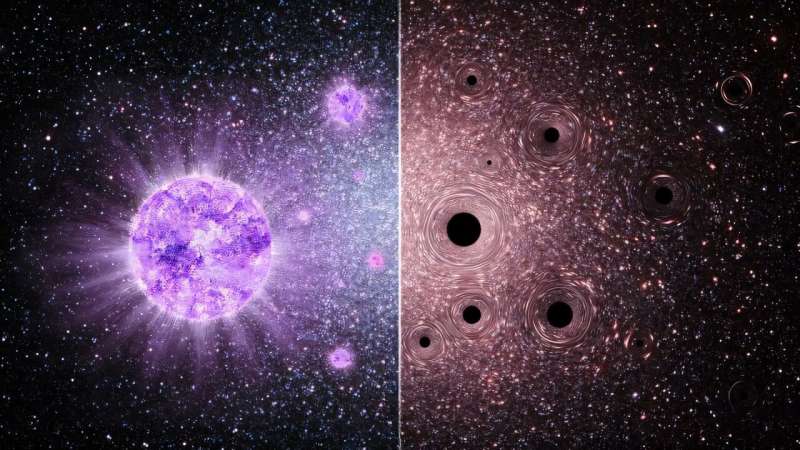An international research team led by Mark Gieles from the University of Barcelona has developed a groundbreaking model that reveals the pivotal role of extremely massive stars (EMS) in the formation and early evolution of the universe’s oldest star clusters. Published in the Monthly Notices of the Royal Astronomical Society, the study suggests that EMS, which exceed 1,000 solar masses, have significantly shaped the chemistry of globular clusters (GCs), some of the universe’s most ancient and intriguing star systems.
Globular clusters, dense spherical groups containing hundreds of thousands to millions of stars, can be found in nearly all galaxies, including our own Milky Way. Most of these clusters are over 10 billion years old, indicating their formation shortly after the Big Bang. They exhibit puzzling chemical signatures characterized by unusual abundances of elements such as helium, nitrogen, oxygen, sodium, magnesium, and aluminum, which have long defied explanation.
The research builds on a star formation model known as the inertial-inflow model, which has been adapted for the extreme conditions of the early universe. The team demonstrated that turbulent gas conditions in massive clusters naturally lead to the creation of EMS, which can weigh between 1,000 and 10,000 solar masses. These massive stars generate powerful stellar winds that are rich in high-temperature hydrogen combustion products. As these winds mix with surrounding pristine gas, they create stars with distinct chemical properties.
“Our model shows that just a few extremely massive stars can leave a lasting chemical imprint on an entire cluster,” stated Mark Gieles. He emphasized that this research finally connects the physics of globular cluster formation with the chemical signatures observed today. Colleagues Laura Ramírez Galeano and Corinne Charbonnel from the University of Geneva noted that while it was previously known that nuclear reactions in the centers of these stars could create specific abundance patterns, this model now offers a natural pathway for the formation of such stars within massive star clusters.
The study indicates that this star formation process occurs rapidly—within a span of just 1 to 2 million years—before any supernovae can explode. This rapid formation ensures that the gas in the cluster remains uninfluenced by supernova contamination, allowing for the preservation of the unique chemical characteristics of the stars formed within.
The implications of this research extend beyond the Milky Way. The authors suggest that the nitrogen-rich galaxies identified by the James Webb Space Telescope (JWST) may be largely influenced by EMS-rich globular clusters formed during the early stages of galaxy formation. “Extremely massive stars may have played a key role in the formation of the first galaxies,” added Paolo Padoan from Dartmouth College and the ICCUB. He explained that the luminosity and chemical production of these stars provide a natural explanation for the nitrogen-enriched proto-galaxies observed in the early universe.
Ultimately, these colossal stars are expected to end their life cycles by collapsing into intermediate-mass black holes, some exceeding 100 solar masses. These black holes could potentially be detected through gravitational wave signals, providing further insights into the dynamics of the early universe.
The study presents a comprehensive framework that connects star formation physics, cluster evolution, and chemical enrichment. It posits that EMSs were essential drivers of early galaxy formation, enriching globular clusters and contributing to the birth of the first black holes.
For more details, refer to Mark Gieles et al, “Globular cluster formation from inertial inflows: accreting extremely massive stars as the origin of abundance anomalies,” published in the Monthly Notices of the Royal Astronomical Society, DOI: 10.1093/mnras/staf1314.
